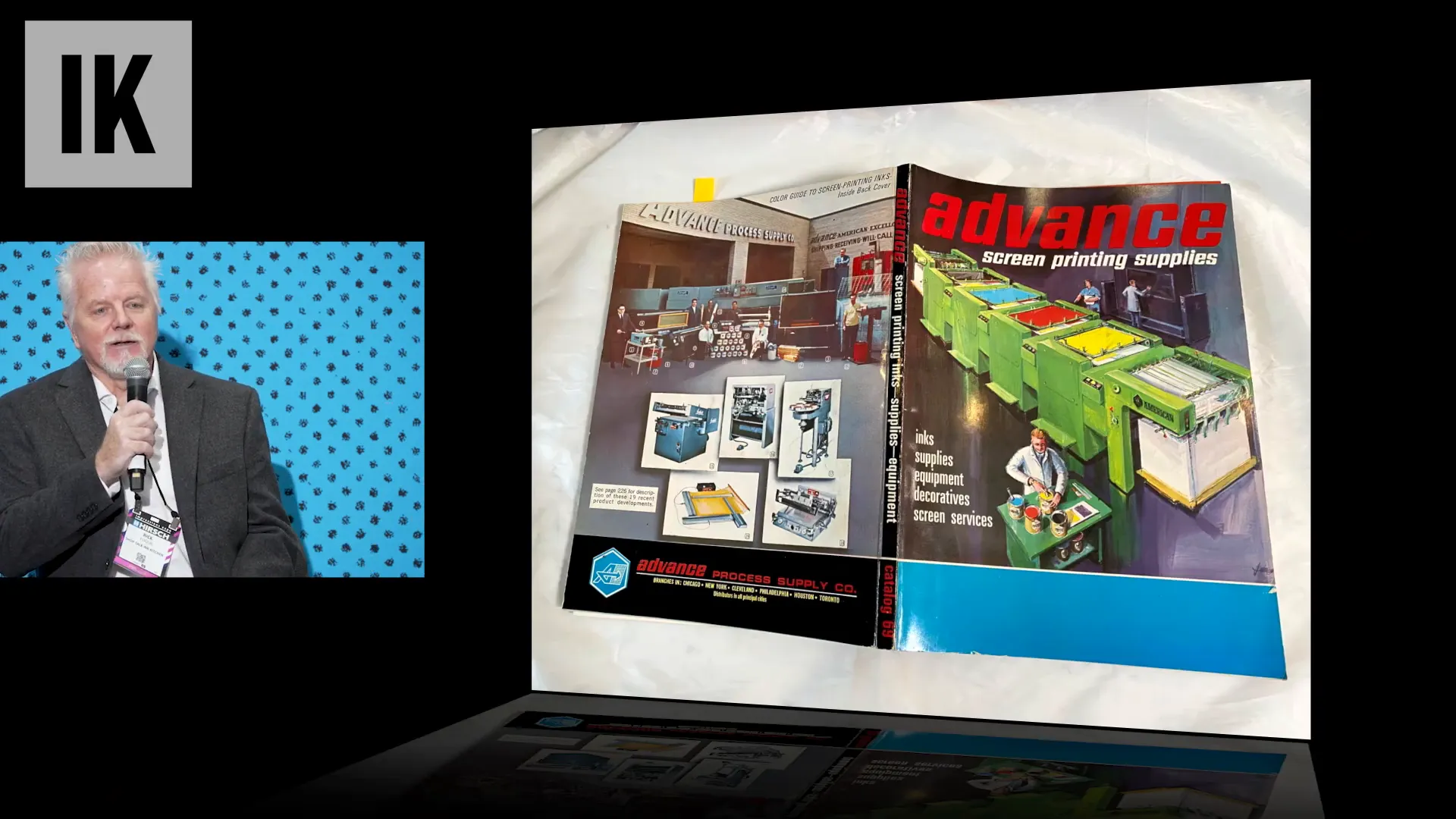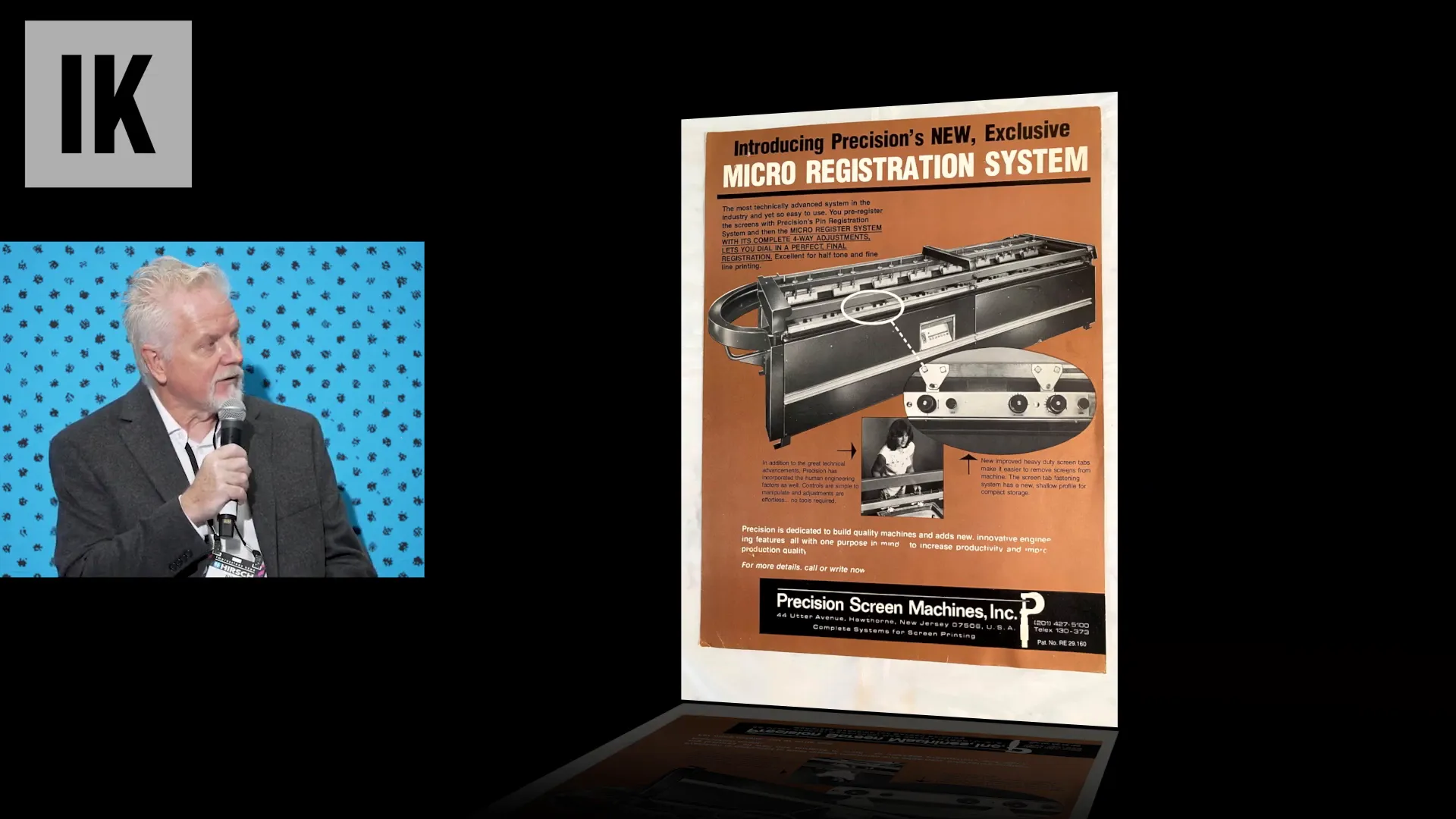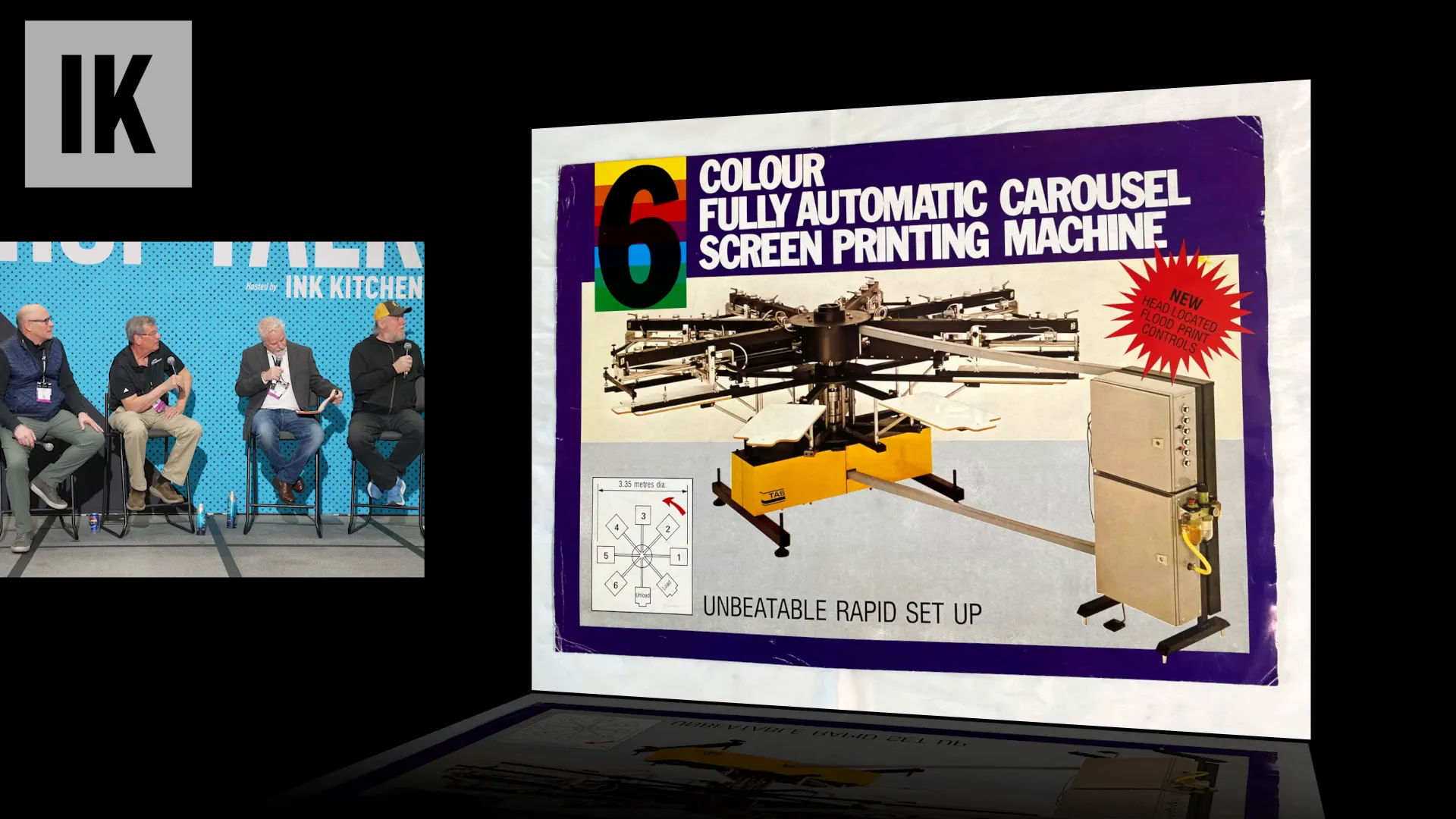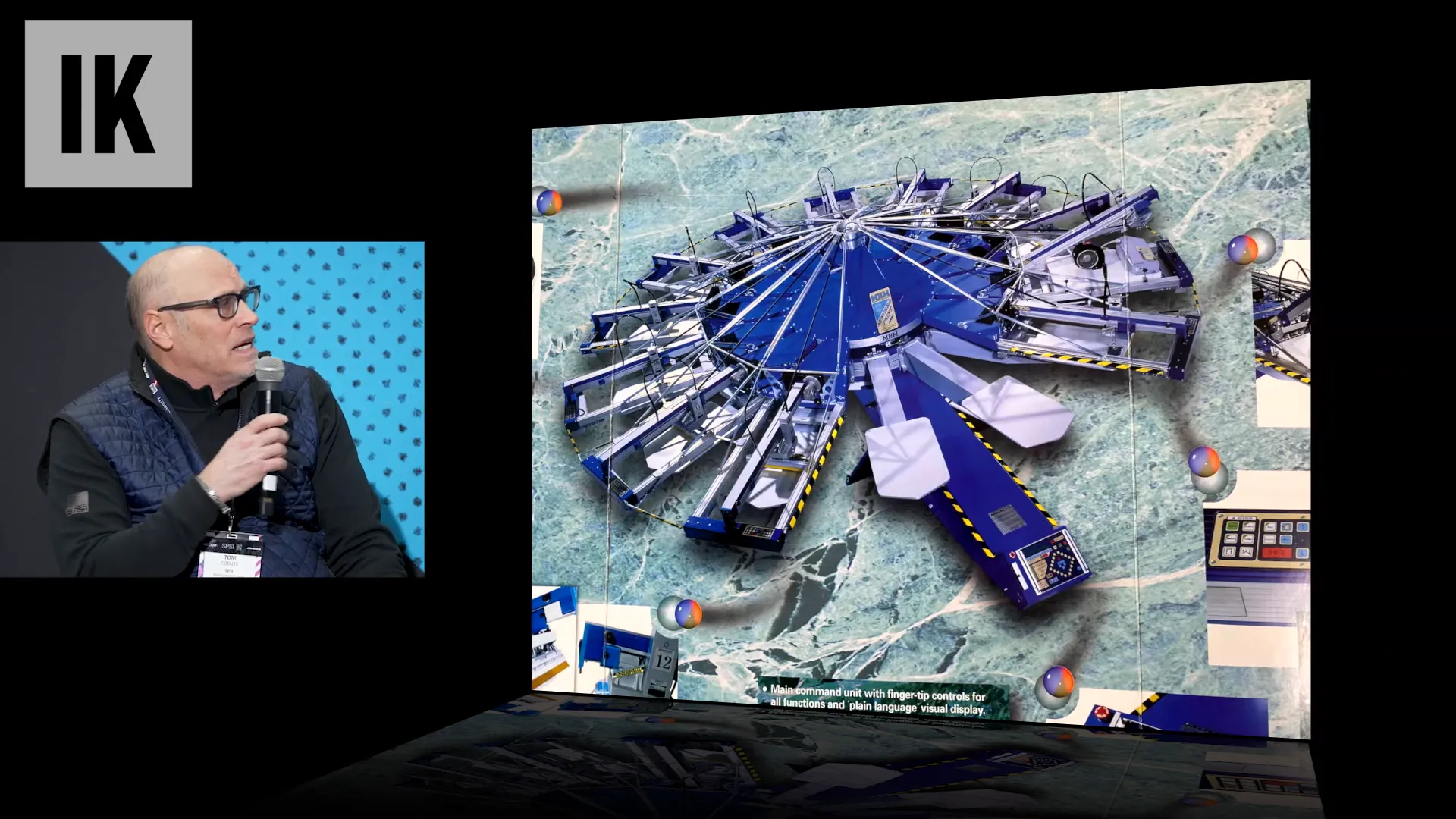Welcome to our exploration of the fascinating history of automatic screen printing machinery, where we delve into the evolution of these essential tools that have shaped the industry. In this post, based on a Shop Talk from Impressions Long Beach, we’ll cover notable machines, their features, and the impact they’ve had on screen printing as we know it today. Rick shared the stage with a panel of industry veterans- Rick Fuqua, Real Performance Machinery; James Ortolani, Hix Corporation; and Tom Codute, SPSI.
The Beginning of Automatic Screen Printing
The journey of automatic screen printing equipment began with inline presses, with the first known machine being manufactured by either Allison Manufacturing or Precision in the late ’60s. This machine, highlighted in an old Advanced catalog, had its fair share of challenges. One significant drawback was that shirts didn’t return back to the operator, leading to a lot of scrap material during setups.

These early machines lacked independent heads; everything worked off a single bar. This meant that the squeegee and flood bar traveled at the same speed, making adjustments cumbersome. The registration system was rudimentary, leading many operators to rely on hammers for fine adjustments.
Hydraulic and Round Machines
As technology progressed, so too did the machines. The hydraulic oval press emerged, which utilized a hydraulic system and a significant ram for indexing. However, these machines had limitations, including no ability to go backward in registration and difficulties integrating flash curing between colors.

Another significant advancement was the Cameo multi printer, introduced in the late ’60s. This was the first, round, automatic press and marked a shift towards more complex printing capabilities. Yet, it faced challenges with thicker inks, necessitating creative solutions like adding lead weights to the print heads.

The Rise of Air-Operated Machines
By the mid-’80s, air-operated machines began to dominate the market. The MHM machine, introduced in 1985, utilized air to operate the squeegee and flood bar carriage. This innovation allowed for more consistent printing but required operators to adapt to new technology.

During this period, companies like M&R and others began to introduce more advanced features, such as the ability to cycle machines by hand, which allowed for greater control and visibility during printing. The Centurion, for example, was designed to compete with M&R’s offerings, boasting a high lift feature for easy screen cleaning.
Technological Innovations and Digital Features
The turn of the century brought an array of digital features to automatic screen printing machines. The introduction of servo-driven systems and digital controls revolutionized how printers operated. Features such as digital off-contact adjustments and precise squeegee pressure readings became standard.

One standout machine was the 3000 series, which introduced the concept of saving jobs and recalling them with a simple button press. This innovation significantly improved efficiency for shops handling multiple short runs, allowing for quicker setups and less downtime.
The Future of Screen Printing Machinery
As we look ahead, the screen printing industry continues to evolve, with new technologies emerging that promise to enhance the capabilities of automatic presses. The integration of digital technologies will likely lead to even more user-friendly machines that cater to the needs of modern print shops.
In conclusion, the history of automatic screen printing equipment is rich and varied, with each innovation building on the successes and challenges of its predecessors. As we continue to document this history, it’s crucial to recognize the impact these machines have had on the industry and the future possibilities they hold.


Comments